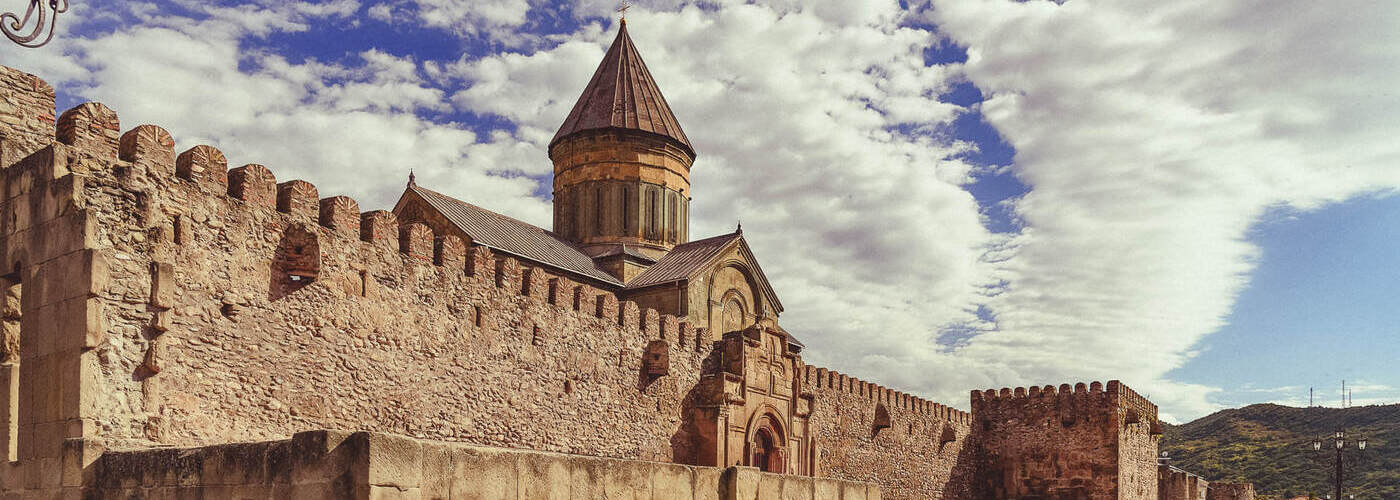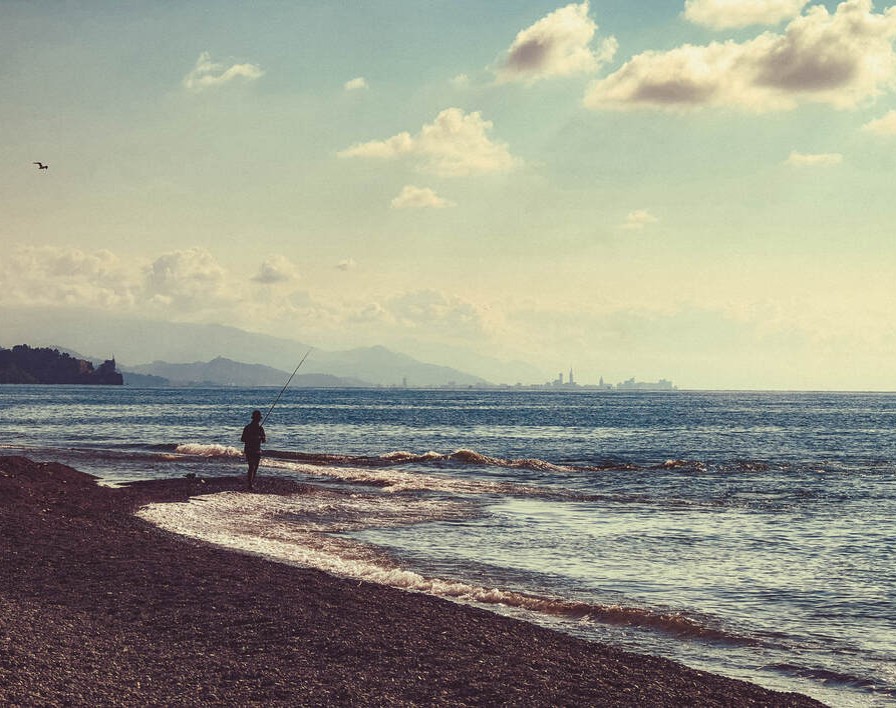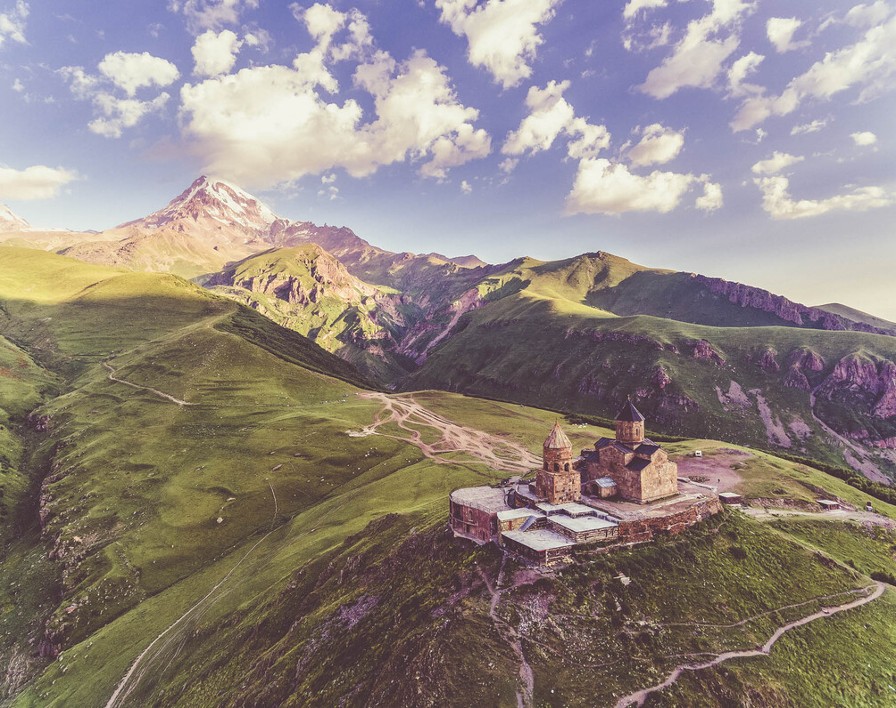- 4
- 1
- 2
- 3
- 3
- 2
- 2
- 2
- 4
- 2
- 4
- 4
- 1
- 1
- 1
- 1
- 1
- 1
- 1
- 1
- 1
- 3
- 3
- 1
- 3
- 3
- 3
Mtskheta
Mtskheta-Mtianeti, Georgia

For almost 1,000 years, the small town of Mtskheta was the capital of the Iberian Empire, a forerunner of present-day Georgia. Today the city is a religious centre of Georgia and a popular tourist destination.
Two sights attract visitors in particular: The Svetitskhoveli Cathedral in the city center and the Jvari Monastery located on a hill above Mtskheta. These monuments, along with others in Mtskheta and the surrounding area, are UNESCO World Heritage Sites.
Svetitskhoveli Cathedral
The Svetitskhoveli Cathedral is the largest and most impressive building in Mtskheta. The present church was built in the 11th century. Before that, however, a church had been standing here since the 4th century. The construction of the Svetitskhoveli Cathedral took almost 20 years (1010 to 1029). In the course of time, the building was often destroyed and rebuilt – for example after the conquests by the Persians, Arabs, and Mongols, but also after earthquakes.
Svetitskhoveli Cathedral is one of the most important religious buildings in Georgia. Not least because various legends say that its predecessor church played an important role in the Christianization of Georgia.
Jvari Monastery
The 6th century Jvari Monastery, situated on a hill near Mtskheta, is a UNESCO World Heritage Site as well. According to various legends, Saint Nino, who brought Christianity to Georgia, erected a cross on the site of the later monastery as early as the 4th century. From the monastery, one has a beautiful view of Mzcheta and the confluence of the two rivers Mtkvari and Aragvi.
Trips to Mtskheta

Highly recommended if you want to discover all three countries of the South Caucasus with all its facettes during just one trip.
- Jan
- Feb
- Mar
- Apr
- May
- Jun
- Jul
- Aug
- Sep
- Oct
- Nov
- Dec


